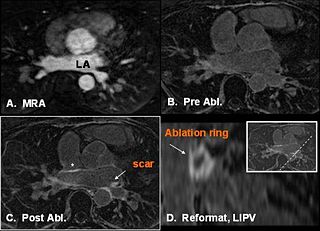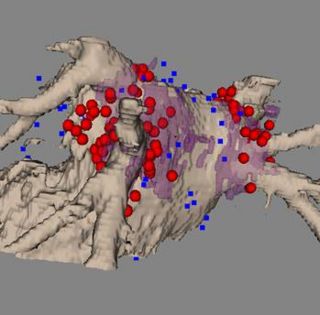Difference between revisions of "2009 Winter Project Week SlicerLayouts"
From NAMIC Wiki
(New page: {| |thumb|320px|Return to [[2009_Winter_Project_Week|Project Week Main Page ]] |[[Image:scarmri_namic.jpg|thumb|320px|Image showing scar in the left atrium using MR...) |
|||
| Line 10: | Line 10: | ||
===Key Investigators=== | ===Key Investigators=== | ||
| − | * | + | * GE: Jim Miller |
| − | * | + | * BWH: Wendy Plesniak |
| − | * | + | * Isomics: Steve Pieper |
| − | |||
<div style="margin: 20px;"> | <div style="margin: 20px;"> | ||
| Line 20: | Line 19: | ||
<h1>Objective</h1> | <h1>Objective</h1> | ||
| − | + | Currently Slicer has the ability to display a fixed set of layouts (often called 'hanging protocols' on Radiology Workstations). Most commercial packages offer a richer set of default layouts that are appropriate for certain modalities and studies, and an ability to configure and save custom layouts. This project will adapt Slicer's existing software to offer default layouts familiar to radiologists, and to create and save custom layouts as well. | |
| − | |||
| − | |||
</div> | </div> | ||
| Line 28: | Line 25: | ||
<h1>Approach, Plan</h1> | <h1>Approach, Plan</h1> | ||
| − | + | Review the current implementation in Slicer, design a new layout module in Slicer's Base, and its interface. Study default layouts commonly provided by commercial software and create them as selectable options. | |
| − | |||
| − | |||
| − | |||
</div> | </div> | ||
| Line 37: | Line 31: | ||
<h1>Progress</h1> | <h1>Progress</h1> | ||
| − | |||
| − | |||
</div> | </div> | ||
| Line 47: | Line 39: | ||
===References=== | ===References=== | ||
| − | |||
| − | |||
| − | |||
Revision as of 19:37, 10 December 2008
Home < 2009 Winter Project Week SlicerLayouts Return to Project Week Main Page |
Key Investigators
- GE: Jim Miller
- BWH: Wendy Plesniak
- Isomics: Steve Pieper
Objective
Currently Slicer has the ability to display a fixed set of layouts (often called 'hanging protocols' on Radiology Workstations). Most commercial packages offer a richer set of default layouts that are appropriate for certain modalities and studies, and an ability to configure and save custom layouts. This project will adapt Slicer's existing software to offer default layouts familiar to radiologists, and to create and save custom layouts as well.
Approach, Plan
Review the current implementation in Slicer, design a new layout module in Slicer's Base, and its interface. Study default layouts commonly provided by commercial software and create them as selectable options.
Progress

